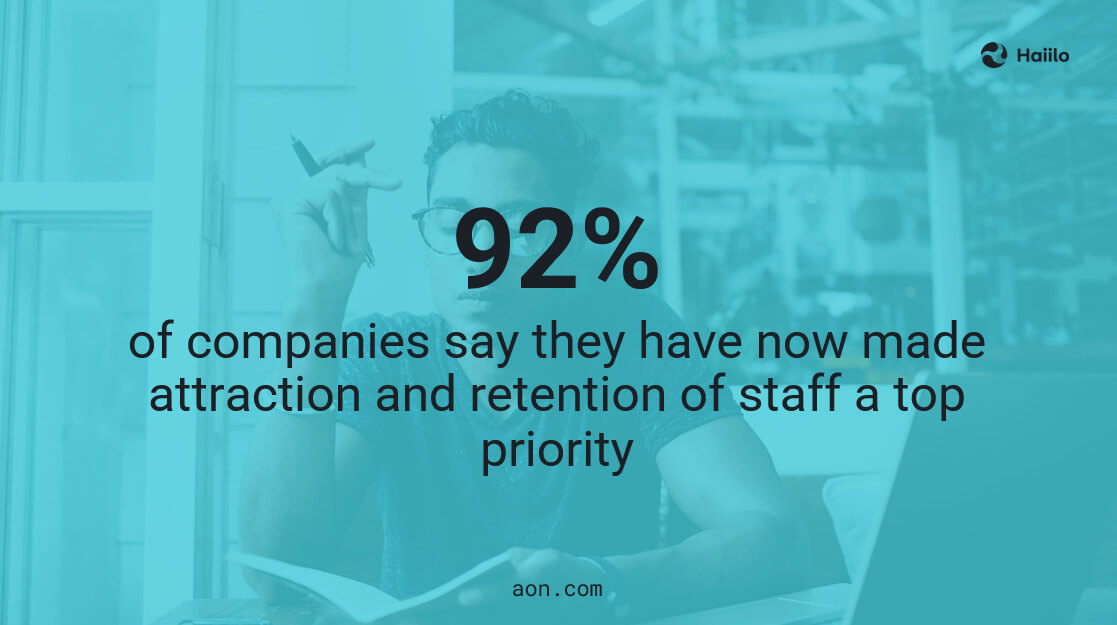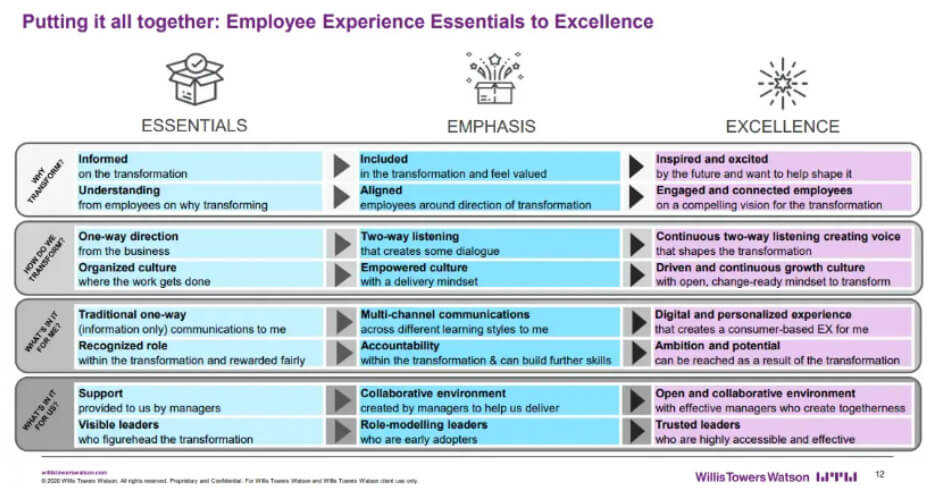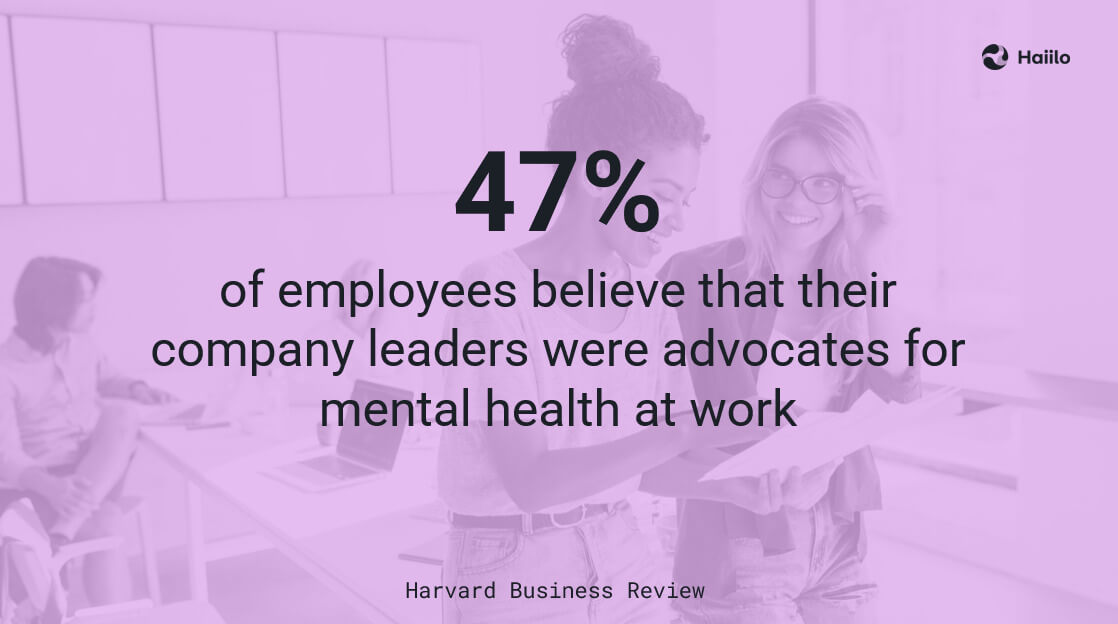Building a resilient workforce is critical for ensuring business continuity. Because people are the greatest asset of every business, a top priority for many organizations today is to make a better decision to create a more flexible, engaged, and resilient workforce.
Global HR Pulse survey found that roughly 92% of companies say they have now made attraction and retention of staff a top priority.

But not long ago, we witnessed the era of great resignation. Soon after, we saw some massive layoffs and organizational restructuring happening worldwide. The gig economy, remote and hybrid work have become the new normal.
Emerging technology, such as ChatGPT, has also been disrupting the talent market. So many people wonder how their jobs will look in the future, while organizations are worried about reskilling and upskilling their workforce.
All these changes caused by market instability significantly impact the future of work, employees’ well-being, mental health, engagement, and performance.
So how can employers ensure workplace resilience even during challenging times?
Keep reading because we will cover some of the best practices followed by successful organizations across the globe.
Build a more resilient workforce with Haiilo communications platform!
1.Strong Core Culture
Strong company culture is the core of every resilient workforce. When your company’s core values are solid and well accepted by the workforce, employees are more likely to overcome change and challenges collaboratively.
According to research, 94% of entrepreneurs and 88% of job seekers say that a healthy culture at work is vital for success.
Employees who develop a strong sense of cohesion and purpose are naturally more motivated to work through challenges and focus on overcoming obstacles.
However, even though many organizations have their cultures “defined,” not many know how to communicate it properly and embed new employee behaviors that align with those values.
Strong internal communications, management, and leadership are critical for ensuring the cultural alignment in the workplace!
2. Workplace Communications
With the emergence of COVID-19, many organizations have become aware of the importance of employee communications for building a more resilient workforce and ensuring business continuity.
📹 Check out our Masterclass about the importance of internal communications in the workplace!
In this great article by SHRM, IBM executives give great examples of how improved employee communications have helped them overcome uncertainty.
When asked about what practices they action, here is what they said:
“Creating clarity and context. Given the different impacts of COVID-19 on each of the 173 countries in which IBM operates, we knew that the frequency and quality of our communication would help reduce uncertainty and anxiety. We also developed an approach to give IBMers a means to be heard so that critical information could be exchanged quickly. We adopted a “single source of truth” model for COVID-19 facts and communication and updated the intranet page around the clock.”
Furthermore, they wanted to connect employees with trusted leaders. They established a regular cadence of CEO communications and opened up a channel for real-time communications. Their CEO released a weekly video that provided information, clarity of direction, and confidence about the future.
Lastly, IMB also created a direct channel to trusted subject matter experts, including IBM’s Chief Medical Officer and resident epidemiologists, to reassure IBMers that their well-being was at the center of every decision they made.
So if you want to build a more resilient workforce, make sure that you invest in your internal communications strategy, initiatives, and technology.
💡Related: 8 Internal Communication Tools Your Company Needs (and Why)
3. Motivation and Engagement
Building a resilient workforce in which employees are more motivatived and engaged is possible. As mentioned earlier, people are every business’s greatest asset. So if people are not motivated to perform well, business success is improbable.
To ensure resilience, employers constantly look for new and improved ways to boost their employee engagement levels. For that, they need to understand various employee experience factors that directly impact motivation and engagement.
Here is a great image from the Wills Towers Watson research explaining what it takes to drive higher employee engagement and provide a memorable employee experience:

To achieve resilience, we need excellence. Take a look at the EX factors that drive excellence. You will notice that the inclusive culture, connected workplace, personalized experience, open and collaborative environment, and strong leadership play a critical role.
We will discuss some of these factors individually later in the blog.
4. Agility and Change Management
Agility and the ability to act fast make some organizations more resilient. Even though strict rules, processes, and procedures are good and appreciated by many employees, sometimes we need to be ready to adapt and adjust.
Given the pace of change and the constant pressure to adapt, many organizations are trying to become more agile. 60% of executives rate this issue as important, and 90% rate it as important.
The challenge is that most people don’t like change. According to research, 73% of change-affected employees report experiencing moderate to high-stress levels.
Effective change management and change communications can counter these trends and support business transformation.
💡 Related: 5 Change Management Models to Take a Look At
5. Workforce Analytics
Without any insights into the current state of your workforce’s resilience, it is hard to make any improvements.
Therefore, focusing on people analytics is a prerequisite for building and maintaining resilience in the workplace.
Regular employee surveys that measure the pulse of your employees, their mental state, engagement levels, and employee experience factors are critical for identifying the gaps that make your employees less resilient than they could be.
According to the Connor-Davidson Resilience Scale (CD-RISC), certain characteristics make people more resilient. Some of these characteristics include commitment, engaging the support of others, personal or collective goals, self-efficacy, an action-oriented approach, patience, and others.
So, businesses can evaluate the resiliency of their employees using these identifying characteristics and leverage the insights to develop a strategy for improving the resilience of their workforce.
Even though many employers practice regular surveys, only a few know how to make a better sense of data. Consequently, they need to figure out how to act upon results.
Survey solutions should, ideally, offer valuable insights from employee responses and provide actionable recommendations for improvements.
6. Reskilling and Upskilling
Reskilling and upskilling are some of the main priorities for organizations today, and this is critical for building a more resilient workforce and remaining competitive. With the emergence of new technology and advanced AI solutions, the need for new employee skills is inevitable.
According to research, it is projected that by 2025 85 million jobs could be displaced by a shift in the division of labor between machines and humans. At the same time, 97 million new roles are expected to be created, driven by technological advances and continuous digital transformation.
Organizations need to have structured career paths in place to keep up with the new trends and market demands.
Besides ensuring resilience, career paths and development plans can also help you retain talent in your organization.
LinkedIn Learning found that if companies actively invested in employees’ careers, up to 94% of workers would choose to stay with them longer.
7. Mental Health and Leadership Support
Employees’ mental health directly impacts employee motivation, engagement, and overall happiness at work. Consequently, organizations with employees suffering from mental health issues will likely be less resilient.
However, many experts believe that employee mental health and well-being training are not enough to overcome the increasing challenge of poor mental health in the workplace.
Instead, they need to consider a complete culture change in which leadership acts as advocates for mental health.
According to research, 54% of respondents believed that mental health was prioritized at their company compared to other priorities, up from 41% in 2019. In addition, 47% of respondents believed that their company leaders were advocates for mental health at work (compared to 37% in 2019), and 47% believed that their manager was equipped to support them if they had a mental health condition or symptom (compared to 39% in 2019).

So leaders must treat mental health as an organizational priority with accountability mechanisms such as regular pulse surveys and clear ownership.
8. Workplace Technology
Luckily, workplace technology solutions can help us, directly and indirectly, to build a more resilient workforce.
But besides just some productivity tools such as CRMs, project management solutions, and similar, there are people-first solutions designed to improve the overall employee experience at work.
For example, Haiilo is an employee communications platform that brings people together through a modern employee intranet, keeps every employee informed about critical company updates, and helps employers improve the overall workplace engagement by understanding the biggest motivating factors.










